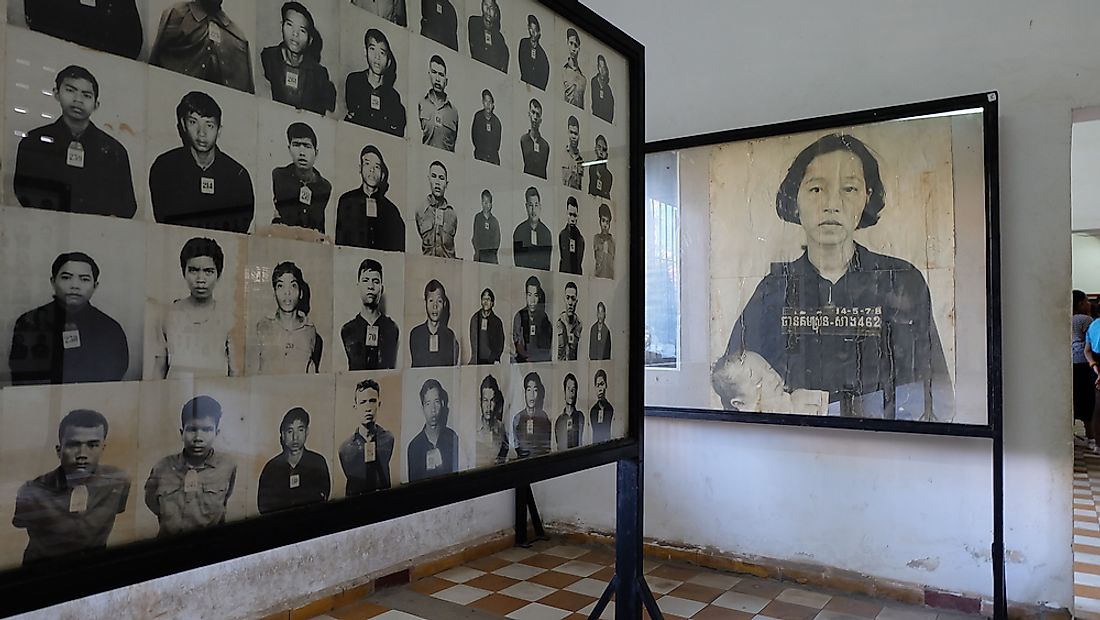What Are The Khmer Rouge Killing Fields?

What Are The Khmer Rouge Killing Fields?
The Khmer Rouge ruled over Cambodia between 1976 and 1979 and during this period, the government sanctioned the mass executions of ethnic minorities, professionals, and Buddhists in the country. The locations where these mass executions were conducted became known as the Khmer Rouge Killing Fields. About two million people are believed to have been executed in the Killing Fields. Many victims were instructed to dig their graves before being executed and buried in them. Most of the graves were shallow since the victims were often too weak to dig deep pits. A memorial park and monument have been erected on the Killing Fields and thousands of bones of victims exhumed from the grounds are displayed inside the monument. However, many more remains are yet to be exhumed, and there have been reports of the bones and clothing of the dead resurfacing during the rainy season. Visitors also report finding bones and teeth on the park grounds.
The Cambodia Civil War
The Cambodia Civil War was a military conflict that pitted the Kingdom of Cambodia with Khmer Rouge insurgents. The civil war lasted for over eight years between March 1967 and April 1975. The civil war also drew in international players including North Vietnam, the United States, and the Viet Cong. The war was one of the bloodiest in Cambodia’s history and resulted in the deaths of between 0.24 million and 0.80 million people and the wanton destruction of property in the country. The civil war resulted in the fall of the Kingdom of Cambodia and rise of Democratic Kampuchea led by the Khmer Rouge. The Cambodia genocide started at the end of the civil war, as the Khmer Rouge administration began implementing its infamous mass executions of minorities.
The Khmer Rouge
The Khmer Rouge was the regime that ruled over the Republic of Kampuchea (modern-day Cambodia) between 1976 and 1979. The Khmer Rouge rose to power after emerging victorious in the Cambodia Civil War and instituted an atheist communist government. The administration was infamous for its mass executions of minorities in the country, which were in the form of mass burials in what was to be known as the Khmer Rouge Killing Fields. Religious persecution was rife during the regime, and thousands of Buddhists, Muslims, and Christians were massacred for their religious beliefs by the atheist Khmer Rouge (there were reports of Muslims being forced to consume pork by the Khmer Rouge, failure to which resulted in death). In the last years, the Khmer Rouge government started goading Vietnam by invading the neighboring country in April 1978. In response, Vietnam invaded Kampuchea and, in conjunction with former Khmer Rouge officials, was able to depose the Khmer Rouge and captured the nation’s capital on January 7th, 1979.
The Cambodia Genocide
The Cambodia genocide was the state-sanctioned mass executions in Cambodia conducted by the Khmer Rouge between 1975 and 1979. The genocide is often regarded as among the bloodiest in history since it resulted in the deaths of between 1.5 million and 3 million people. About 60% of the deaths during the genocide were perpetrated as executions, with the remainder being caused by disease and starvation. The Khmer Rouge soldiers would target anyone who was associated with the deposed Kingdom of Cambodia, ethnic minorities, religious communities (mainly Buddhists), and intellectuals. The government also aimed at extending the executions to the Vietnamese, with the regime directing Kampucheans to “kill the 50 million Vietnamese”. The genocide ended after the Khmer Rouge were deposed by Vietnamese forces in 1979.







